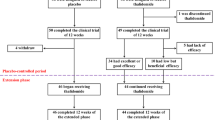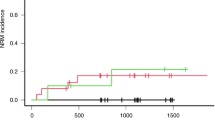Abstract
We analyzed plasma pharmacokinetics of busulfan in 64 children and young adults (age 2.8–26; median 11 years) with homozygous β-thalassemia transplanted with bone marrow from HLA-identical sibling donors. A uniform conditioning regimen was employed, using busulfan 14 or 16 mg/kg in 12 divided doses, and cyclophosphamide 120 or 200 mg/kg. Three sets of parameters were examined in this homogenous patient population: (1) factors that affect the plasma kinetics of busulfan, such as age and pre-transplant liver status defined by liver function tests, ferritin levels and liver biopsy; (2) busulfan-related toxicity: occurrence of veno-occlusive disease, seizures and idiopathic interstitial pneumonitis; and (3) the relationship between busulfan exposure and transplant outcome: engraft- ment delay or rejection, aplasia, occurrence of mixed chimeras and mortality. Kinetic analysis of first and 10th dose (using area under the curve (AUC), maximum and minimum concentration) as comparable, showing no sign of accumulation or decline in busulfan plasma levels over time. Age and liver status did not influence busulfan metabolism. No relationship was found between busulfan exposure and toxicities or transplant outcome. We conclude that busulfan monitoring is not predictive in children and young adults with homozygous β-thalassemia receiving busulfan and high-dose cyclophosphamide along with histocompatable sibling donor marrow.
This is a preview of subscription content, access via your institution
Access options
Subscribe to this journal
Receive 12 print issues and online access
$259.00 per year
only $21.58 per issue
Buy this article
- Purchase on Springer Link
- Instant access to full article PDF
Prices may be subject to local taxes which are calculated during checkout
Similar content being viewed by others
Author information
Authors and Affiliations
Rights and permissions
About this article
Cite this article
Pawlowska, A., Blazar, B., Angelucci, E. et al. Relationship of plasma pharmacokinetics of high-dose oral busulfan to the outcome of allogeneic bone marrow transplantation in children with thalassemia. Bone Marrow Transplant 20, 915–920 (1997). https://doi.org/10.1038/sj.bmt.1701001
Received:
Accepted:
Issue Date:
DOI: https://doi.org/10.1038/sj.bmt.1701001



